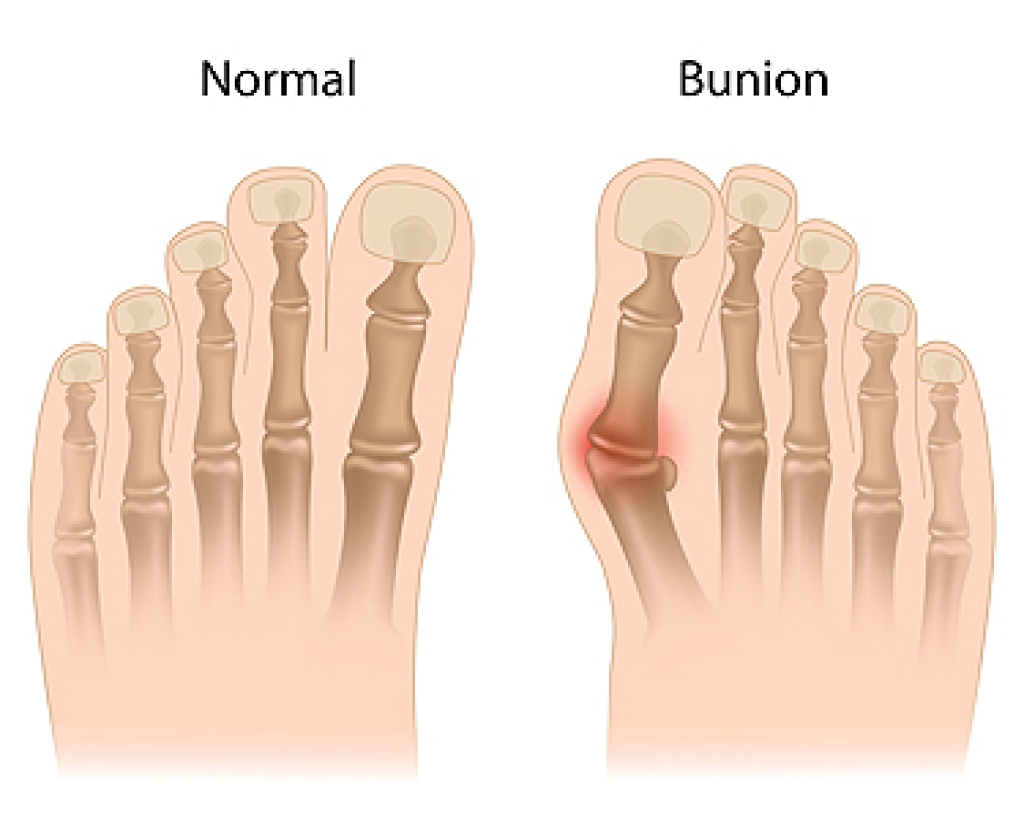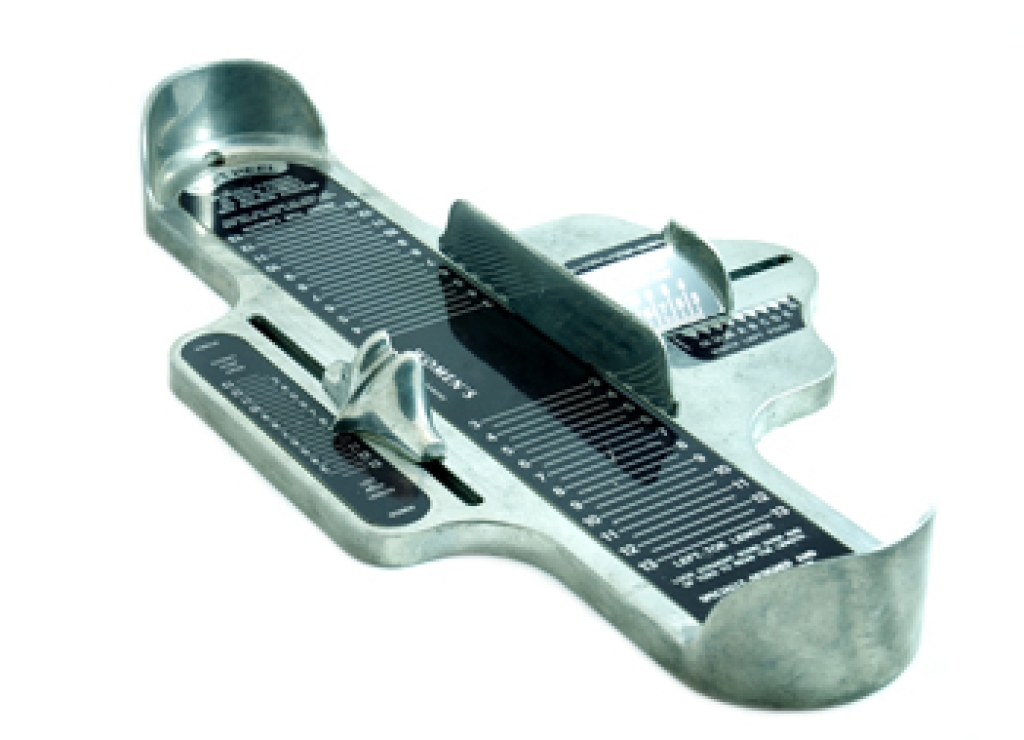Connect With Us
Blog
Blog
Common Causes of a Swollen Big Toe

A swollen big toe can be painful and may interfere with walking or daily activities. One common cause is an ingrown toenail, which occurs when the nail edge grows into the surrounding skin and leads to redness and swelling. A fracture in the toe bone can also cause sudden swelling, bruising, and tenderness after an injury. Bunions often create chronic swelling at the base of the big toe due to joint misalignment. Additionally, gout is another cause and may lead to intense swelling, warmth, and pain from uric acid buildup. Hallux rigidus causes stiffness and swelling from arthritis in the big toe joint. A podiatrist can determine the exact cause through examination and imaging, then provide proper treatment to relieve pain and restore function. If big toe swelling persists or worsens, it is suggested that you consult a podiatrist for an expert evaluation and appropriate care.
Toe pain can disrupt your daily activities. If you have any concerns, contact Jason Bell, DPM of Advantage Foot and Ankle Center . Our doctor can provide the care you need to keep you pain-free and on your feet.
What Causes Toe Pain?
Most severe toe pain is caused due to a sports injury, trauma from dropping something heavy on the toe, or bumping into something rigid. Other problems can develop over time for various reasons.
Toe pain can be caused by one or more ailments. The most common include:
- Trauma
- Sports injury
- Wearing shoes that are too tight
- Arthritis
- Gout
- Corns and calluses
- Hammertoe
- Bunions
- Blisters
- Ingrown toenails
- Sprains
- Fractures (broken bones)
- Dislocations
When to See a Podiatrist
- Severe pain
- Persistent pain that lasts more than a week
- Signs of infection
- Continued swelling
- Pain that prevents walking
Diagnosis
In many cases the cause of toe pain is obvious, but in others, a podiatrist may want to use more advanced methods to determine the problem. These can range from simple visual inspections and sensation tests to X-rays and MRI scans. Prior medical history, family medical history, and any recent physical traumatic events will all be taken into consideration for a proper diagnosis.
Treatment
Treatments for toe pain and injuries vary and may include shoe inserts, padding, taping, medicines, injections, and in some cases, surgery. If you believe that you have broken a toe, please see a podiatrist as soon as possible.
If you have any questions please contact our office located in Newark, DE . We offer the newest diagnostic and treatment technologies for all your foot and ankle needs.
Bunions and Foot Joint Health

A bunion is a progressive foot deformity that develops when the joint at the base of the big toe shifts out of proper alignment, causing the toe to angle inward. Common causes include joint problems, poorly fitting shoes, and inherited foot structure influenced by genetics. Over time, uneven pressure on the joint leads to inflammation and structural changes. Symptoms often include a visible bump, redness, swelling, stiffness, and pain that worsens with walking or prolonged standing. As the condition progresses, normal movement of the foot may become limited. A podiatrist can evaluate joint alignment, identify contributing factors, and create a personalized treatment plan. Care may include footwear guidance, orthotics, padding, or advanced treatment options to relieve discomfort and slow progression. If you have the beginning signs of a bunion developing, it is suggested that you consult a podiatrist who can offer you effective management tips.
If you are suffering from bunion pain, contact Jason Bell, DPM of Advantage Foot and Ankle Center . Our doctor can provide the care you need to keep you pain-free and on your feet.
What Is a Bunion?
Bunions are painful bony bumps that usually develop on the inside of the foot at the joint of the big toe. As the deformity increases over time, it may become painful to walk and wear shoes. Women are more likely to exacerbate existing bunions since they often wear tight, narrow shoes that shift their toes together. Bunion pain can be relieved by wearing wider shoes with enough room for the toes.
Causes
- Genetics – some people inherit feet that are more prone to bunion development
- Inflammatory Conditions - rheumatoid arthritis and polio may cause bunion development
Symptoms
- Redness and inflammation
- Pain and tenderness
- Callus or corns on the bump
- Restricted motion in the big toe
In order to diagnose your bunion, your podiatrist may ask about your medical history, symptoms, and general health. Your doctor might also order an x-ray to take a closer look at your feet. Nonsurgical treatment options include orthotics, padding, icing, changes in footwear, and medication. If nonsurgical treatments don’t alleviate your bunion pain, surgery may be necessary.
If you have any questions, please feel free to contact our office located in Newark, DE . We offer the newest diagnostic and treatment technologies for all your foot care needs.
How Your Shoes Contribute to Foot Health

Shoes play an important role in foot health because they influence alignment, pressure, and stability. Footwear that fits well and supports the arch helps reduce stress on the heel and forefoot, especially while standing or walking on hard surfaces. A Brannock device is effective in determining what the right shoe is, enabling correct choices to be made for the desired shoe style. Lace-up styles can help the ankle stay aligned, although boots that rise too high can limit ankle movement, so they should fit comfortably around the front of the ankle. High heels force the toes forward and increase pressure under the ball of the foot, which can lead to bunions, claw toes, corns, and thickened nails. Sports shoes need cushioning for shock absorption and a firm back section to cradle the heel. Alternating shoes allows materials to recover and may extend their life. A podiatrist can assess your foot posture, prescribe custom insoles, and recommend shoes that support foot health. If you regularly experience foot pain, it is suggested that you schedule an appointment with a podiatrist for a diagnosis and appropriate treatment.
Getting the right shoe size is an important part of proper foot health. Seek the assistance of Jason Bell, DPM from Advantage Foot and Ankle Center . Our doctor will provide the care you need to keep you pain-free and on your feet.
Getting the Right Shoe Size
There are many people who wear shoes that are the incorrect size, negatively affecting their feet and posture. Selecting the right shoes is not a difficult process, so long as you keep several things in mind when it comes to choosing the right pair.
- When visiting the shoe store, use the tools available to measure your foot.
- Be sure there is ‘wiggle room’. There should be about an inch between your toes and the tip of your shoes.
- Do not always assume you are the same size, as manufacturers run differently.
- Purchase shoes later in the day, as your feet swell as the day progresses.
- If a shoe is not comfortable, it is not suitable. Most shoes can’t be ‘broken in’, and comfort should be the ultimate goal when it comes to choosing the right pair of shoes
As our feet hold our body weight and keep us moving, it is important to treat them right. Picking the right pair of shoes can provide your feet comfort and mobility without pain.
If you have any questions, please feel free to contact our office located in Newark, DE . We offer the newest diagnostic and treatment technologies for all your foot care needs.
Foot Corns and How to Keep Your Feet Comfortable

A foot corn is a common foot problem that develops when thickened skin forms in response to repeated pressure or friction. Corns often appear on toes or areas that rub against tight or poorly fitted shoes, leading to pain, tenderness, and irritation. They can become more uncomfortable over time if the pressure continues. Preventing corns starts with choosing comfortable shoes that fit well and do not create the same pressure spots. Soft insoles and protective pads can also reduce friction. A podiatrist can safely remove thickened skin, evaluate the cause of the pressure, and recommend footwear or orthotics to stop corns from returning. If you have ongoing foot discomfort or think you may have developed a corn, it is suggested that you schedule a visit with a podiatrist for expert care and relief.
If you have any concerns regarding your feet and ankles, contact Jason Bell, DPM of Advantage Foot and Ankle Center . Our doctor will treat your foot and ankle needs.
Corns: What Are They? and How Do You Get Rid of Them?
Corns can be described as areas of the skin that have thickened to the point of becoming painful or irritating. They are often layers and layers of the skin that have become dry and rough, and are normally smaller than calluses.
Ways to Prevent Corns
There are many ways to get rid of painful corns such as wearing:
- Well-fitting socks
- Comfortable shoes that are not tight around your foot
- Shoes that offer support
Treating Corns
Treatment of corns involves removing the dead skin that has built up in the specific area of the foot. Consult with Our doctor to determine the best treatment option for your case of corns.
If you have any questions, please feel free to contact our office located in Newark, DE . We offer the newest diagnostic and treatment technologies for all your foot care needs.
Blog Archives
- 2026
- 2025
- 2024
- 2023

